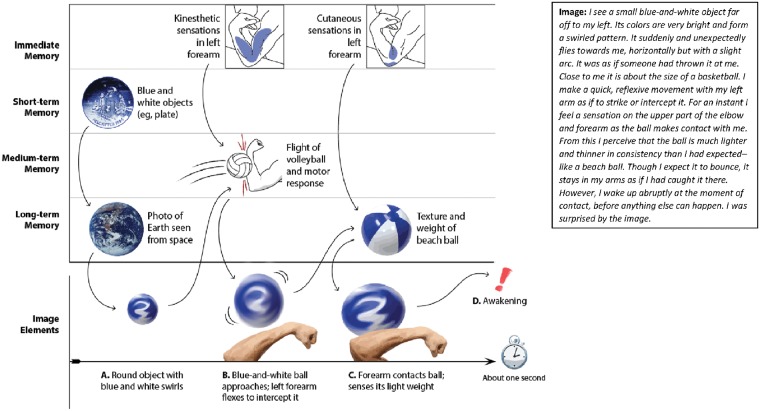Figure 5.
Multi-temporal description of memory sources associated to a single, 1-s microdream (right panel) and hypothetical model of their real-time combination during image formation. Four categories of memory sources (Y-axis) combine to produce elements of the microdream sequence (X-axis). Arrows indicate possible causal influences among elements via a “transformative priming” process. The image is proposed to unfold in three steps: (A) several short-term and one long-term memory elements combine to produce a round, blue-and-white object seen at a distance; (B) the prior result combines with immediate memory impressions (kinesthetic) and one medium-term memory (flight of ball, motor response) to produce a transformed image of an approaching ball and reflex motor response; (C) the prior result combines with additional immediate memory impressions (cutaneous) and a long-term memory element (beach ball) to produce a transformed image of object contact with touch feedback. Memory sources transform subsequent elements even as they trigger (“prime”) them—but all very quickly and at a preconscious level. The result is a continuous de novo integration of memory sources that reflects features from all contributing memories, but which expunges other features. The primary memory element—a reflex arm movement pictured in the center of the grid—is modified by secondary elements: color, trajectory, weight, and texture are changed slightly. Transformative priming may sustain spatiotemporal coherence of the sequence, may account for an image’s novel character and may explain why larger episodic memories are typically not represented (artwork courtesy: Sabrina Nielsen).

